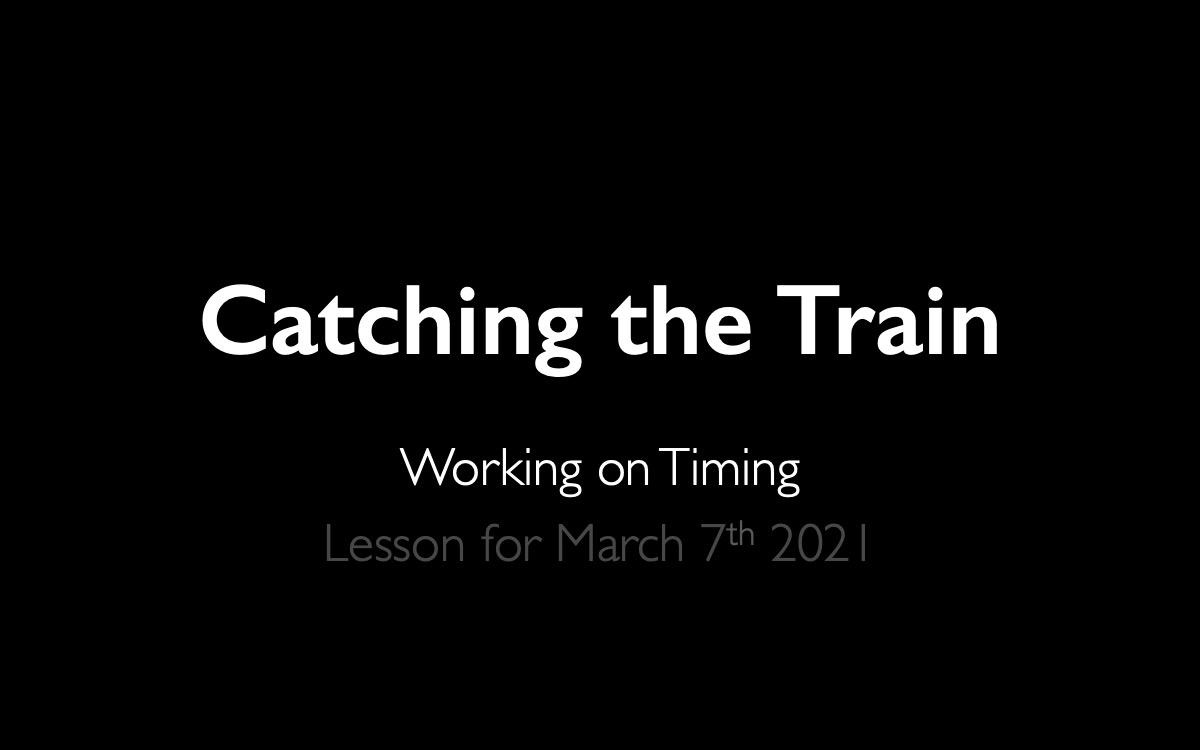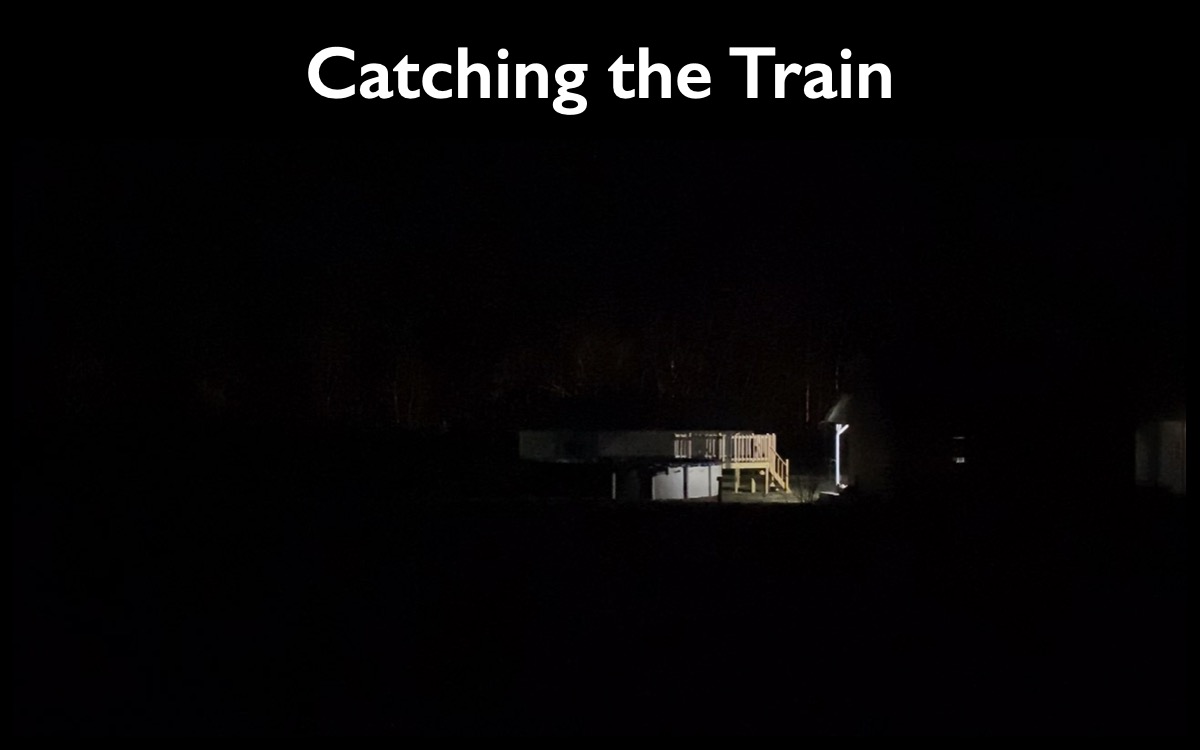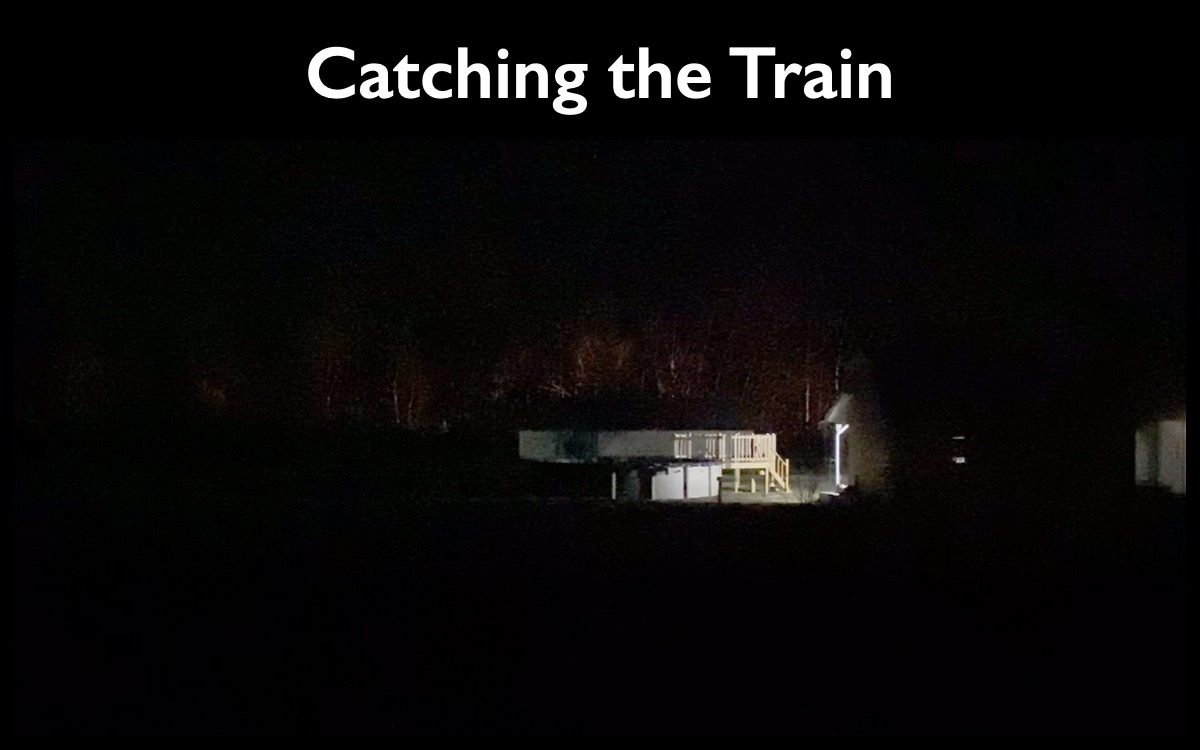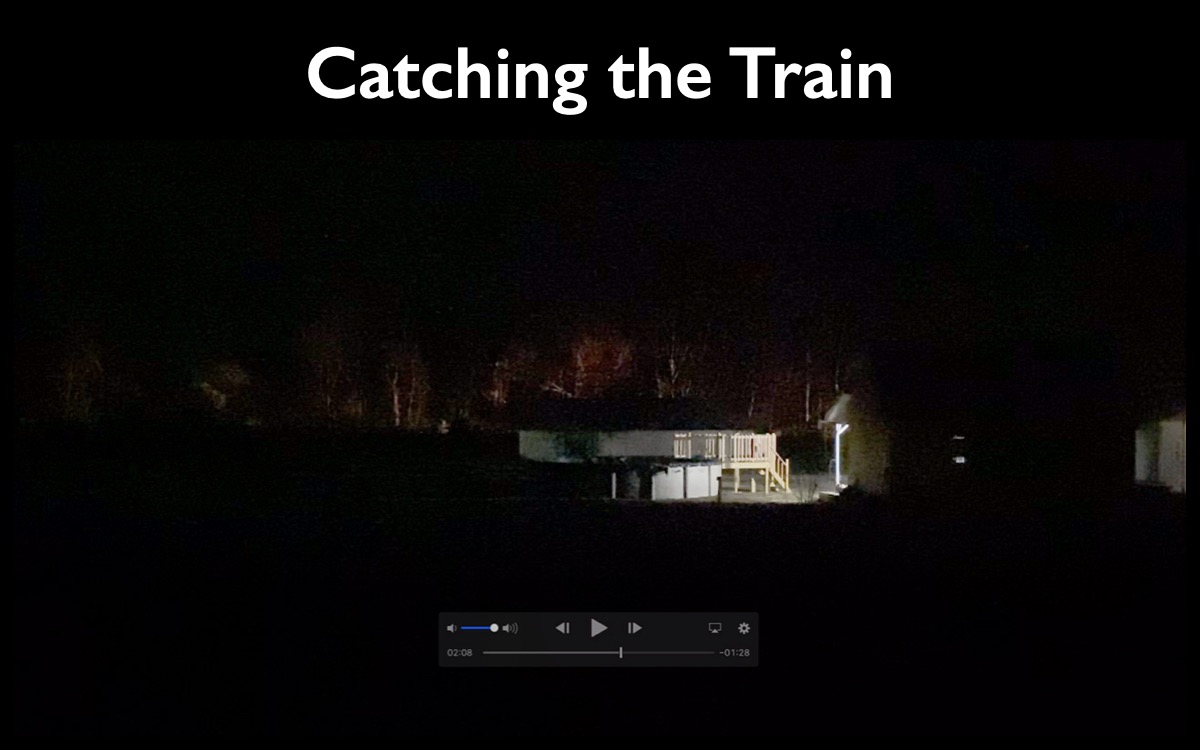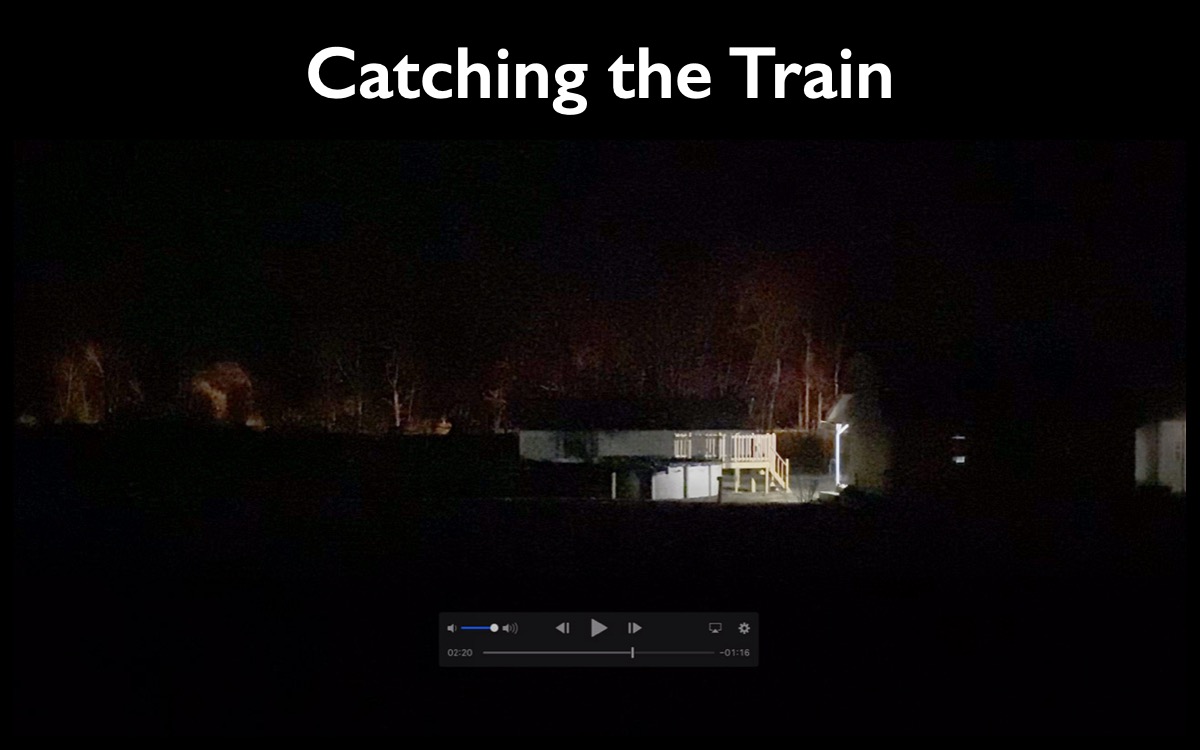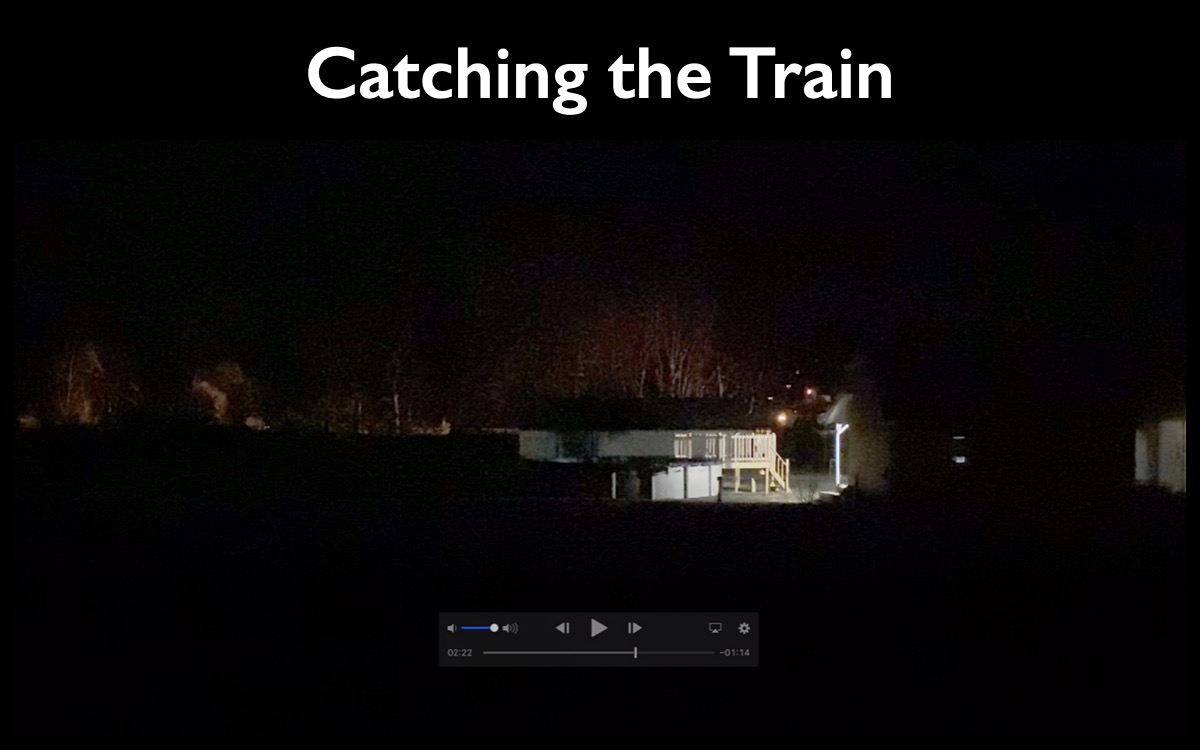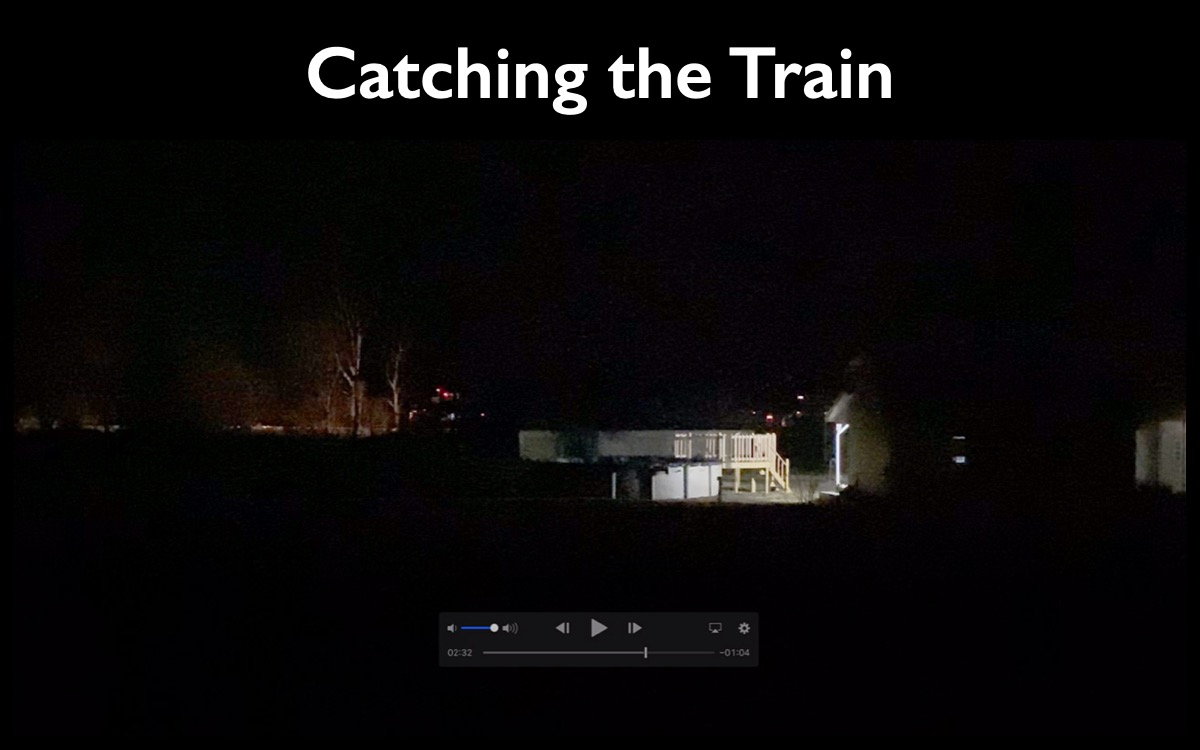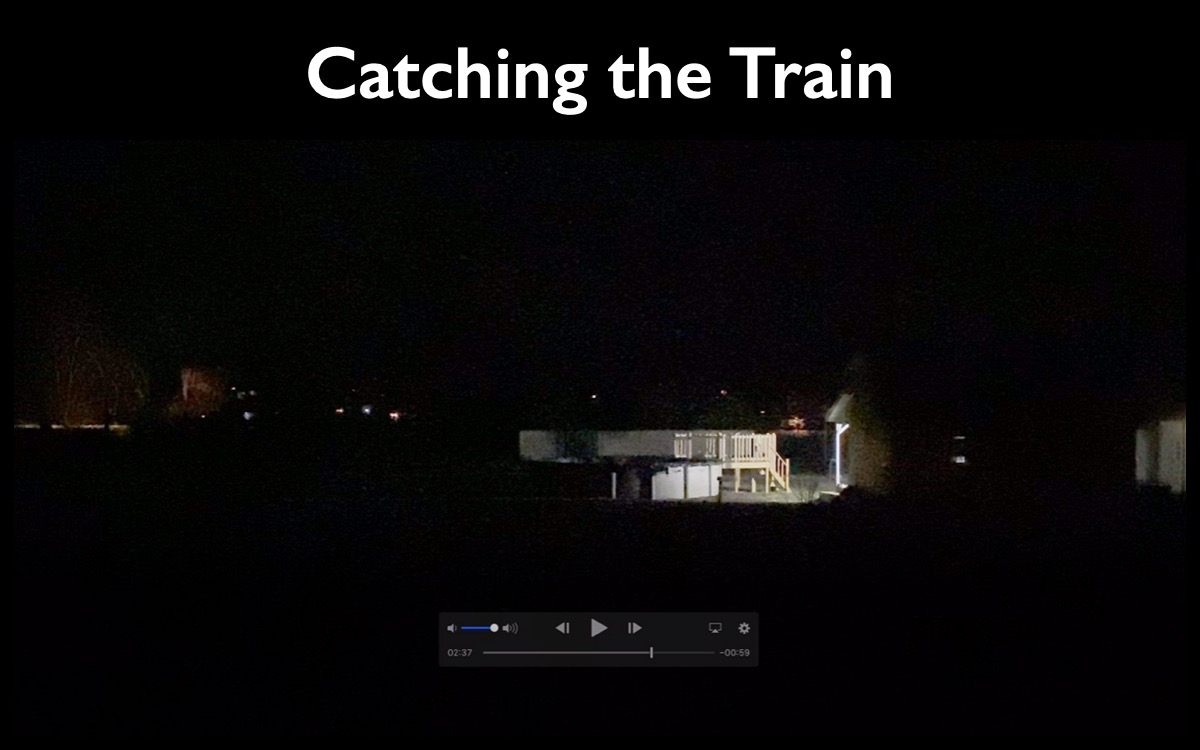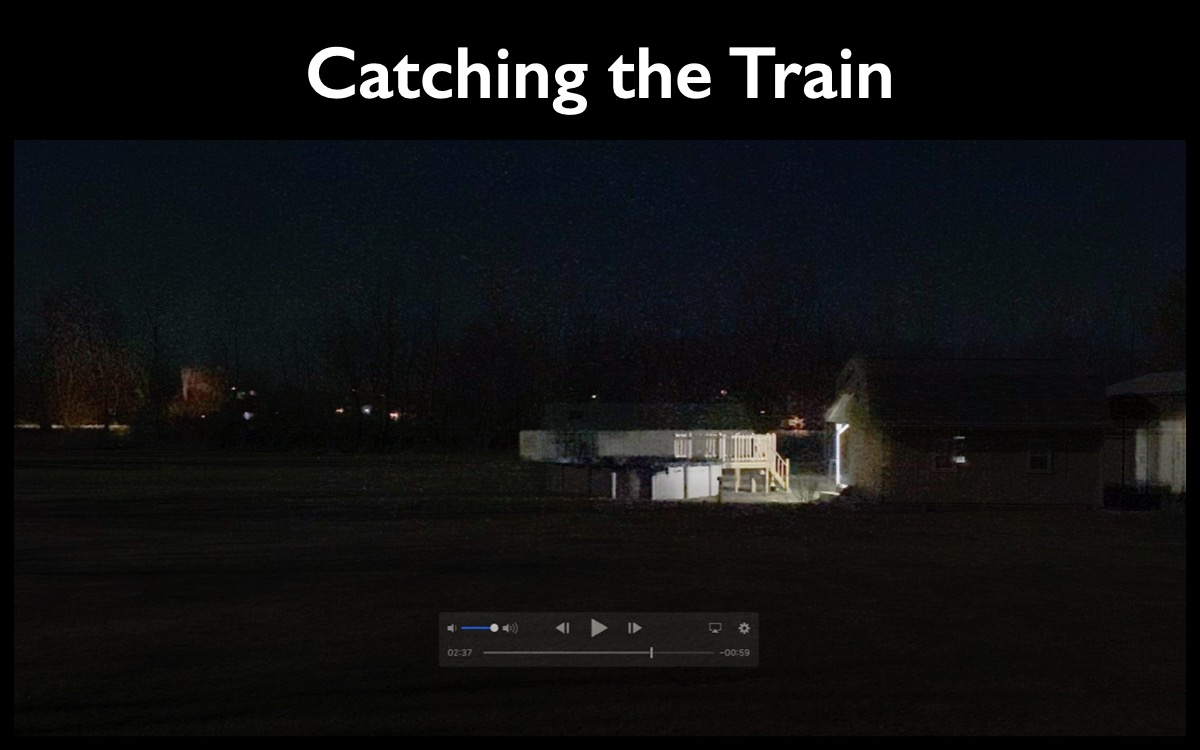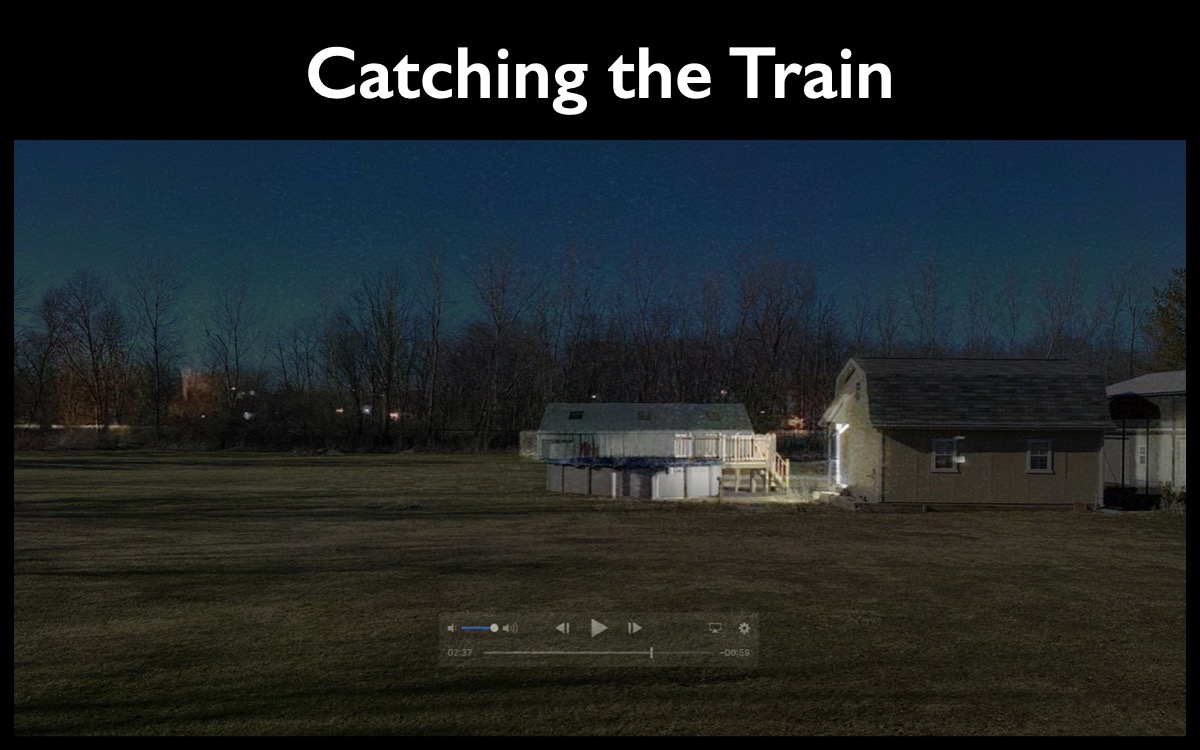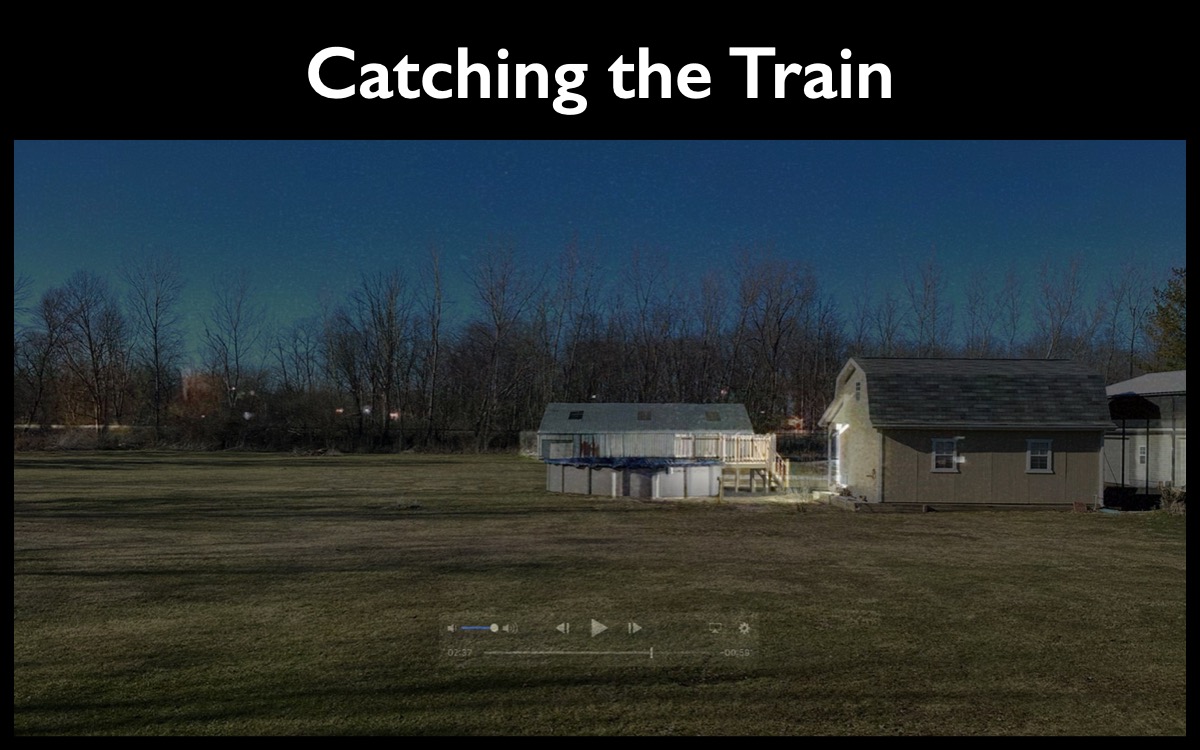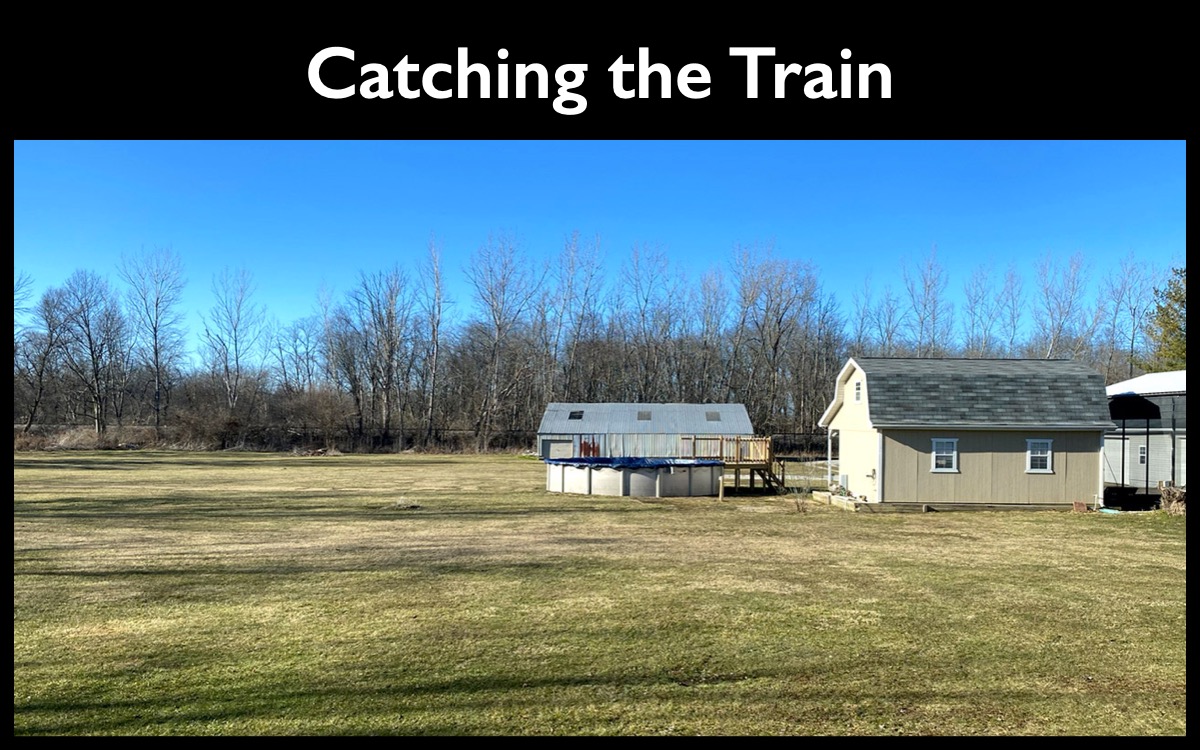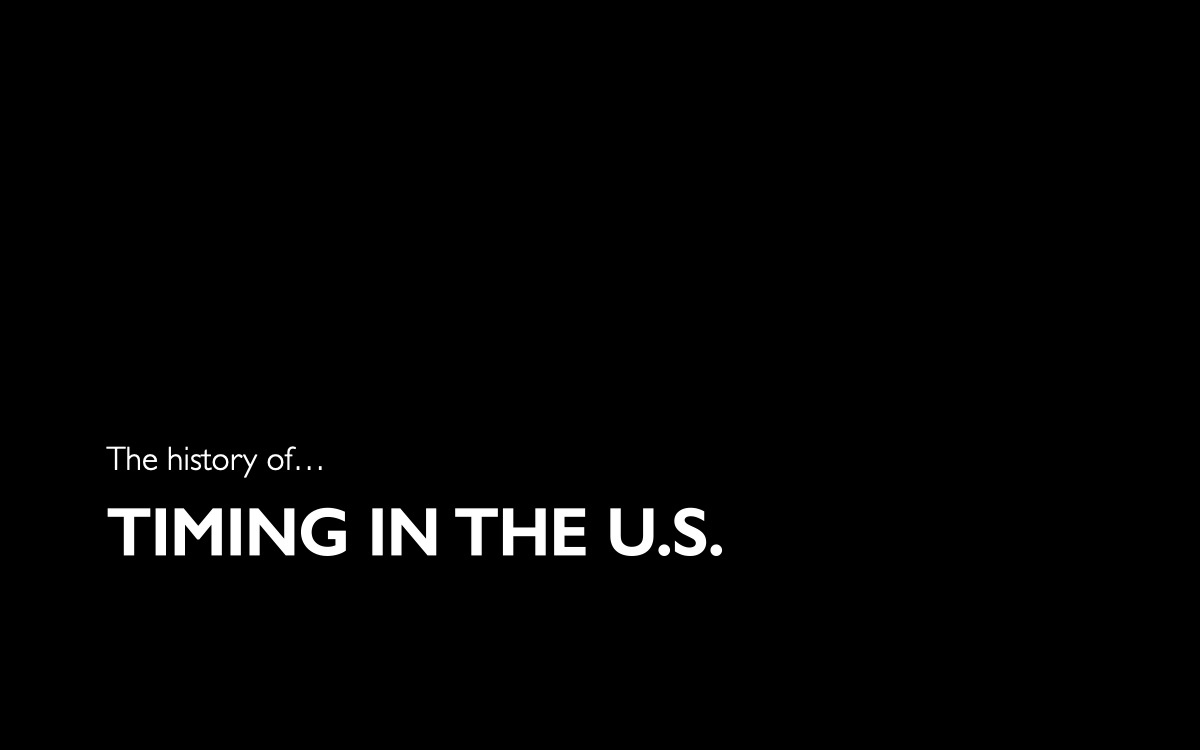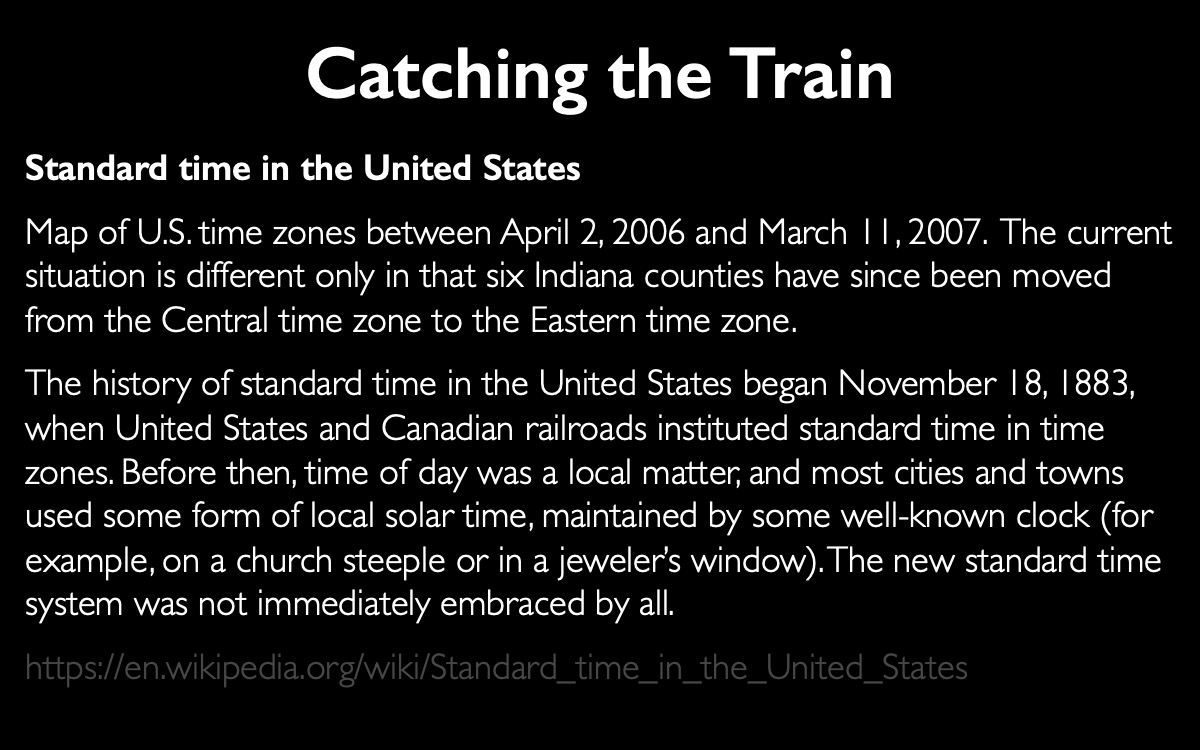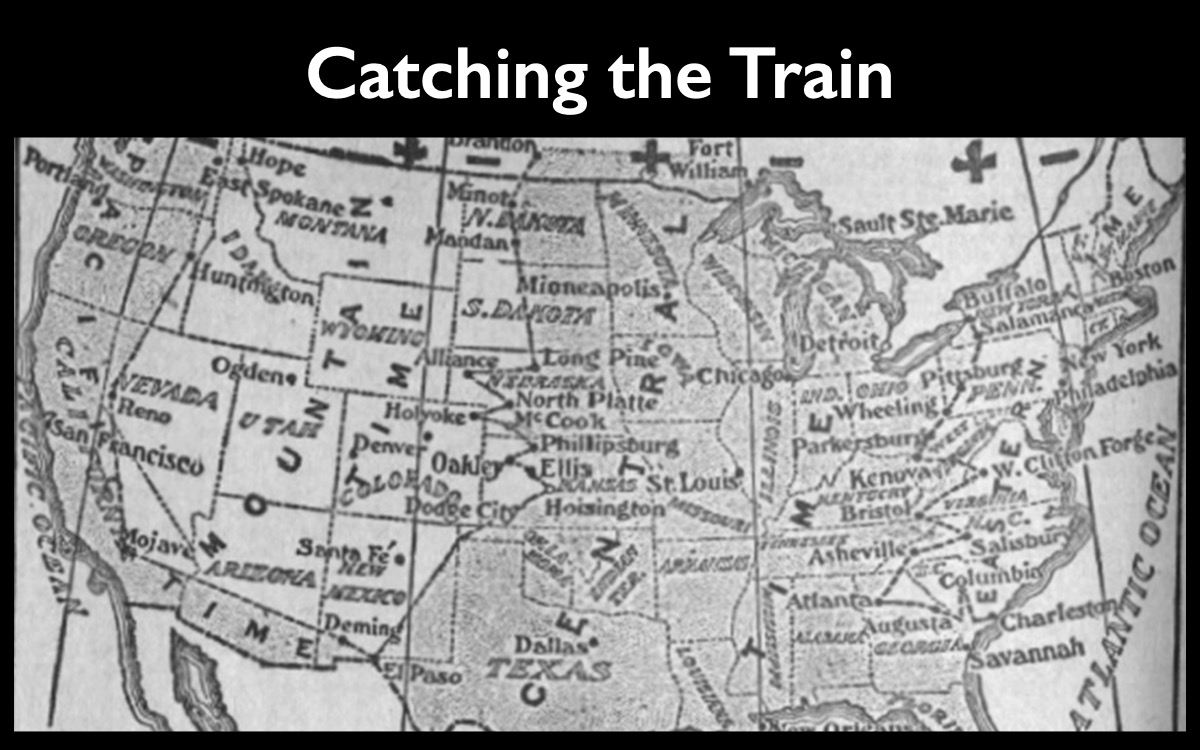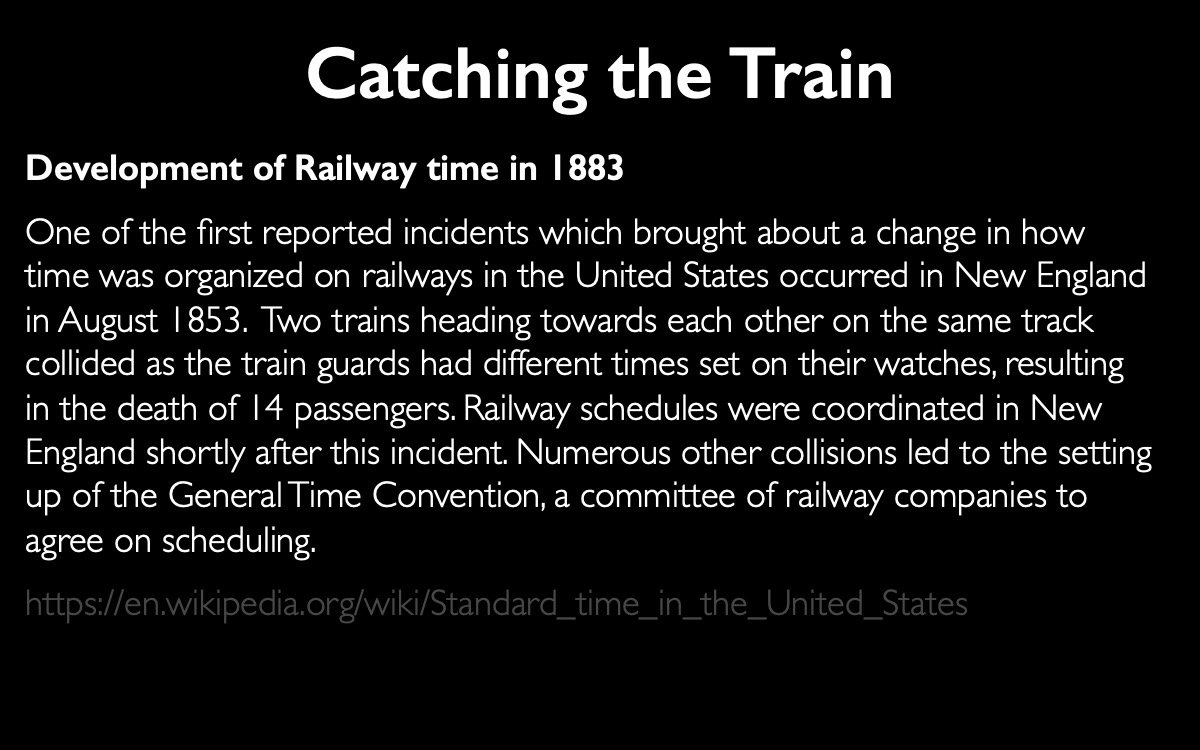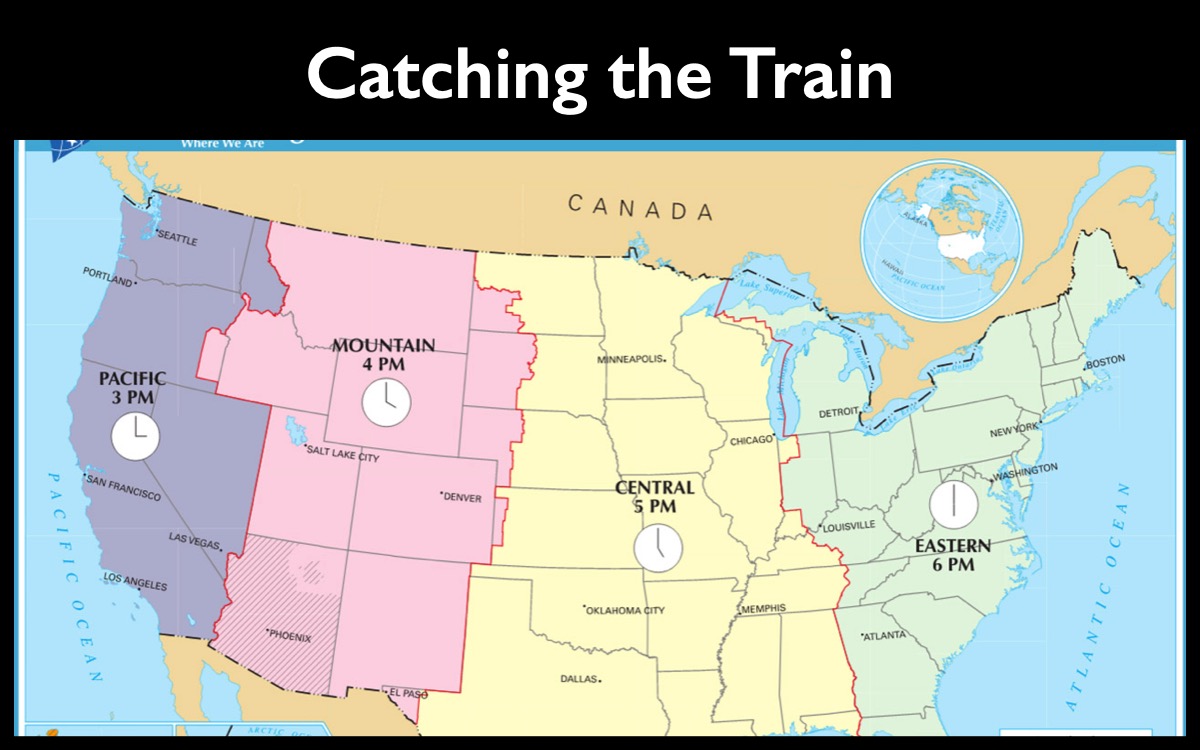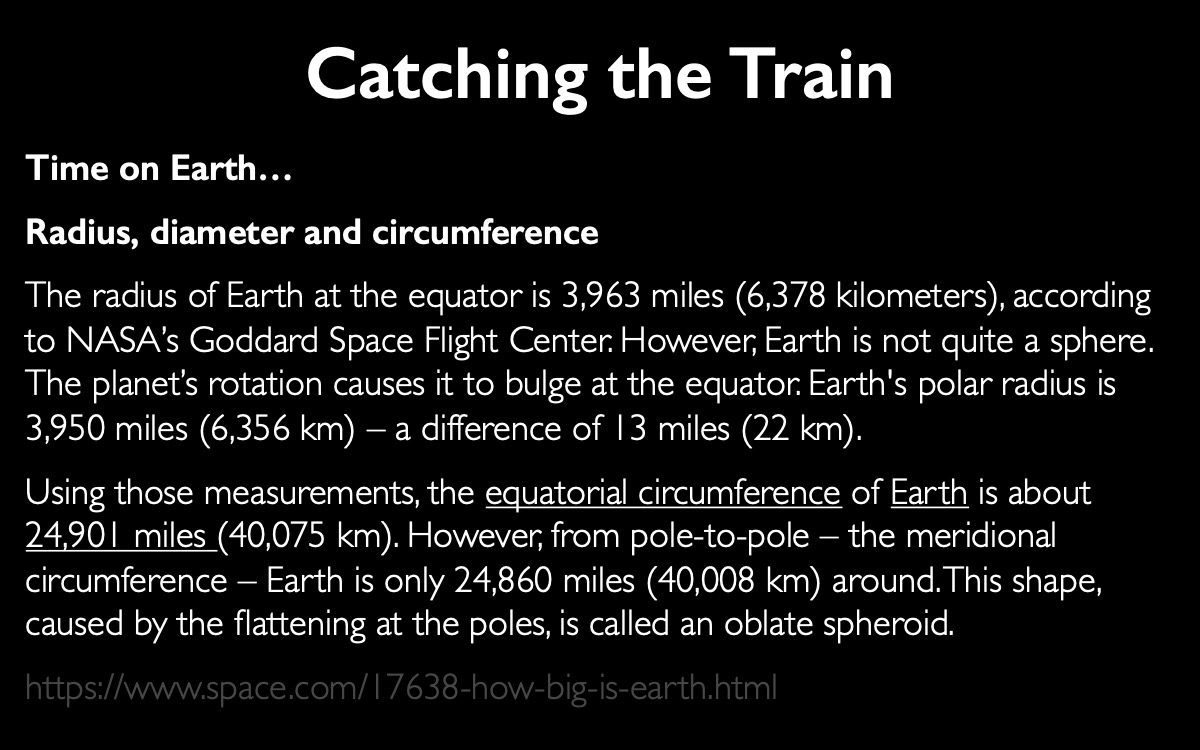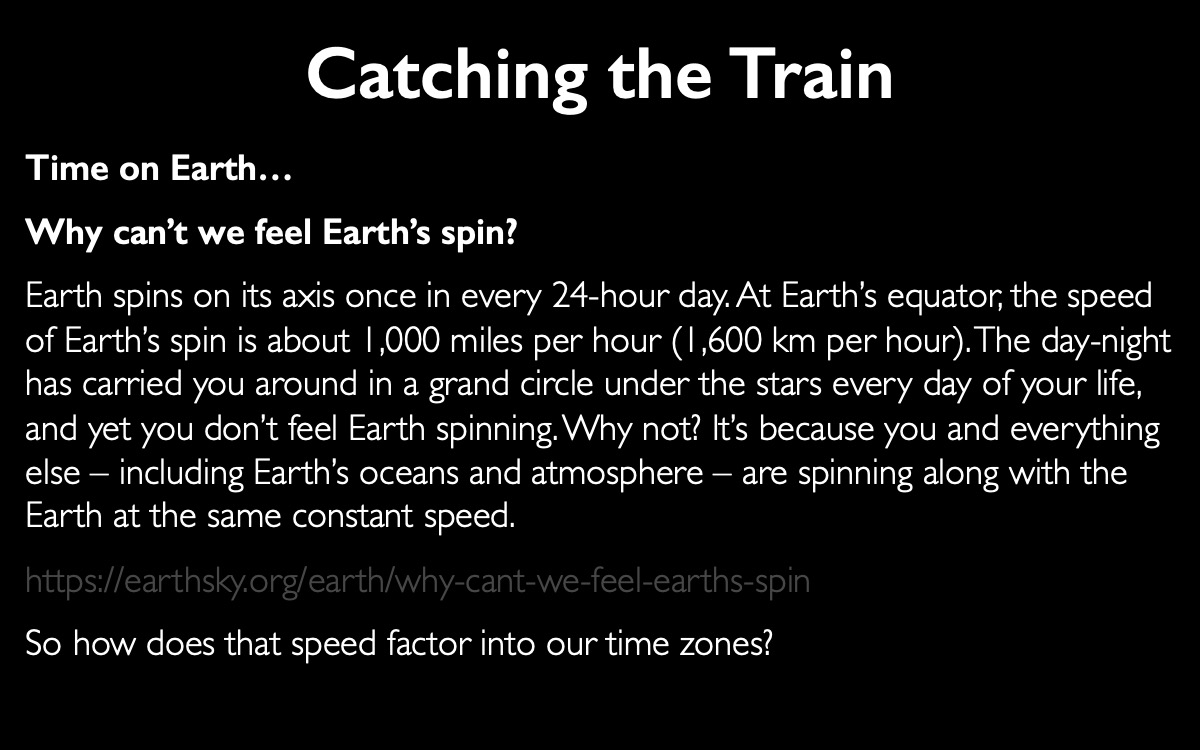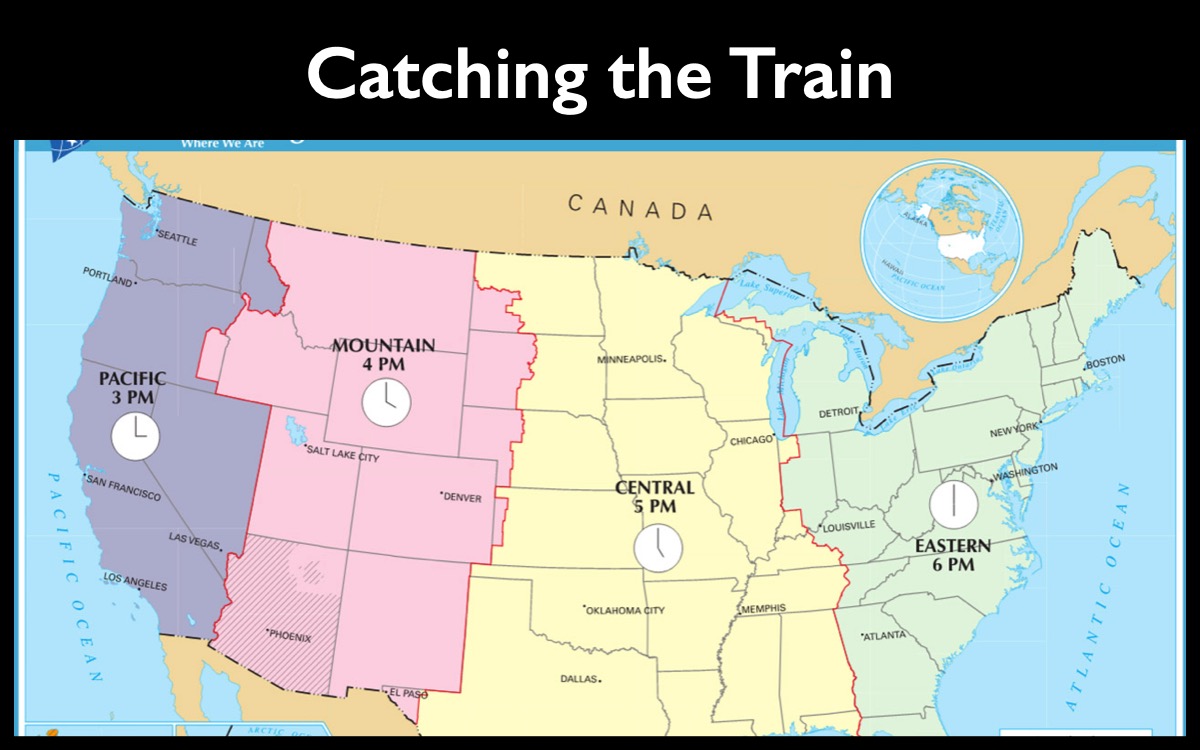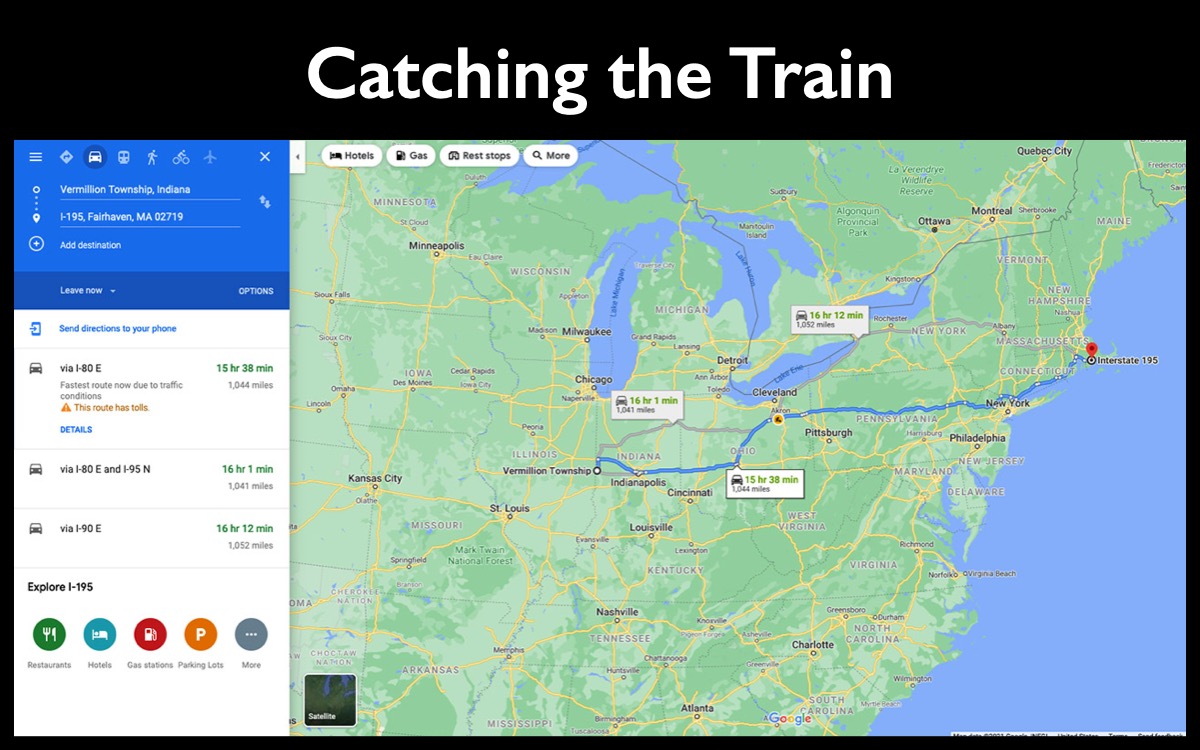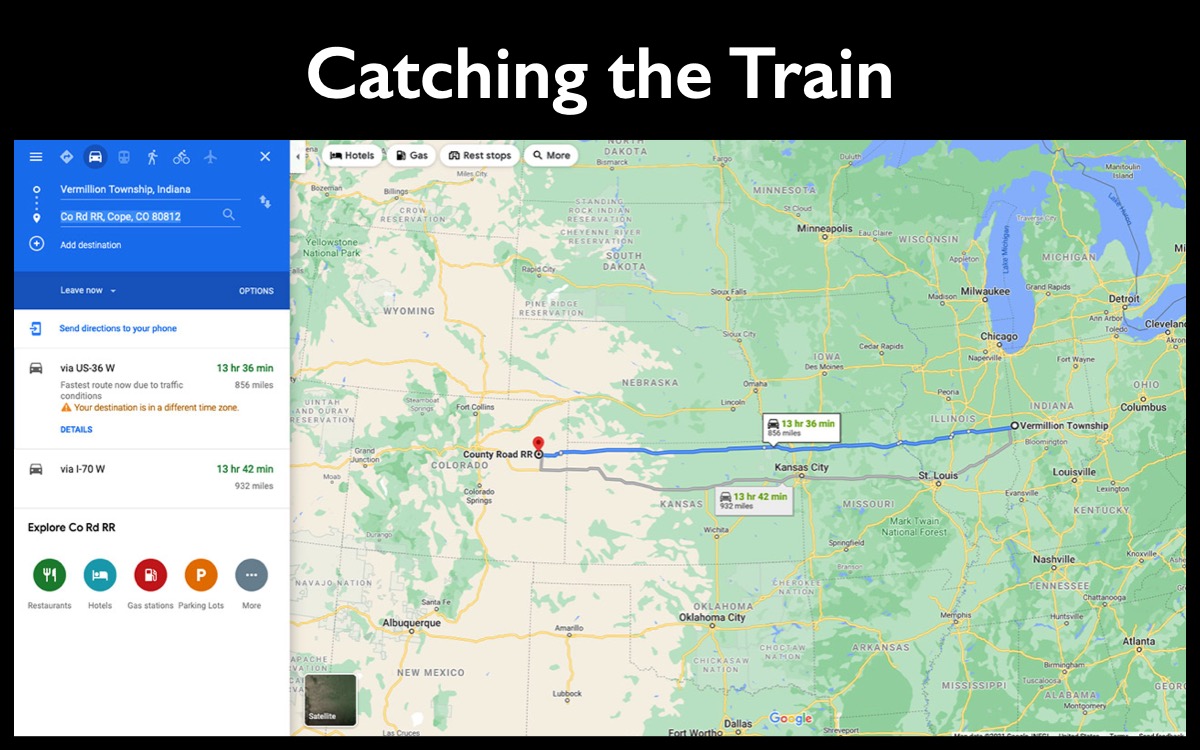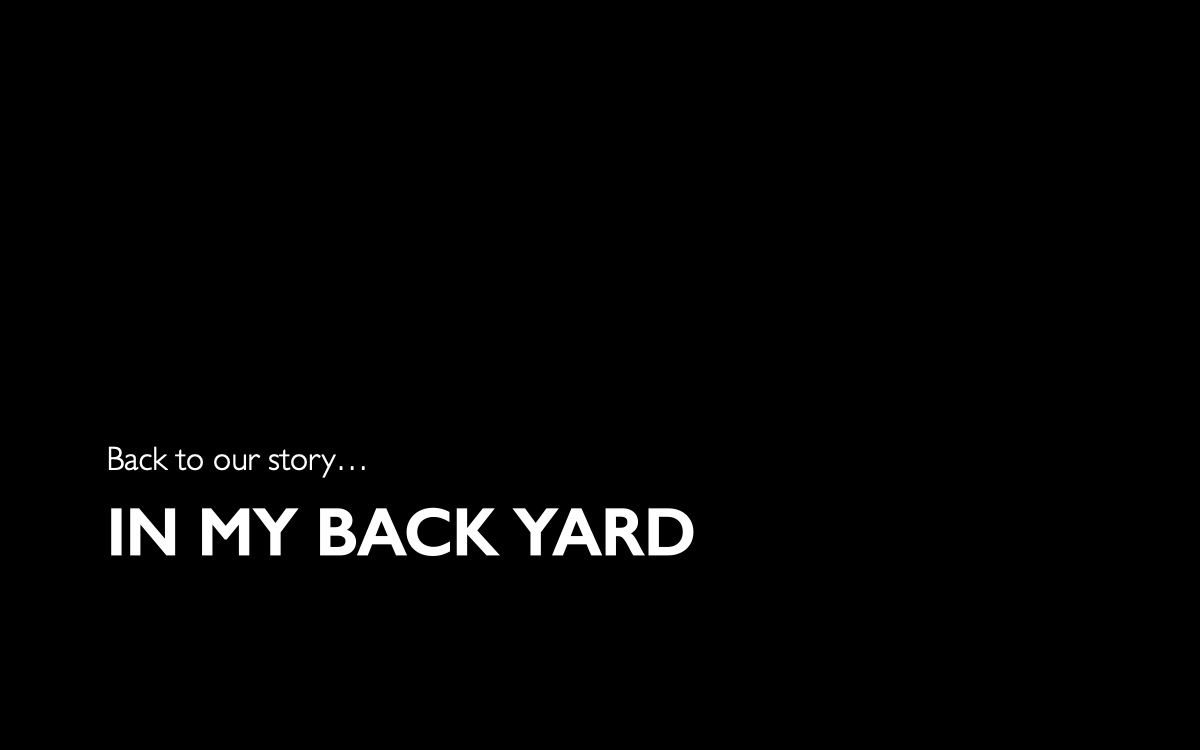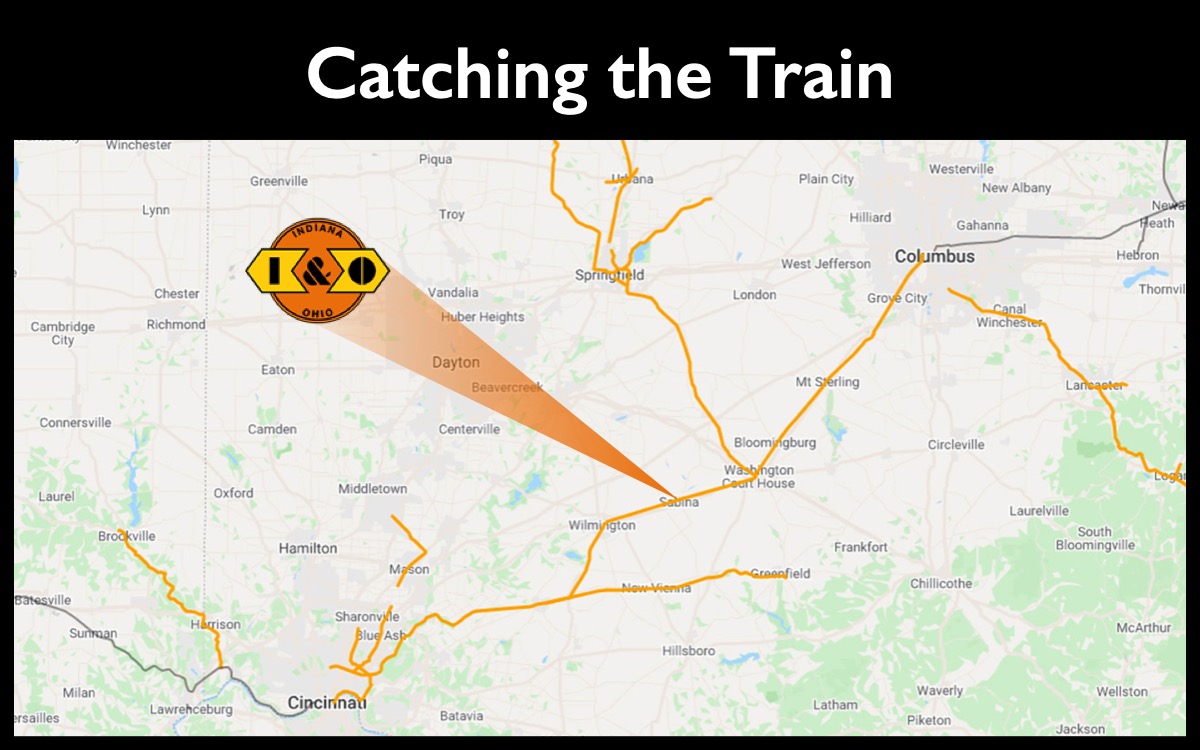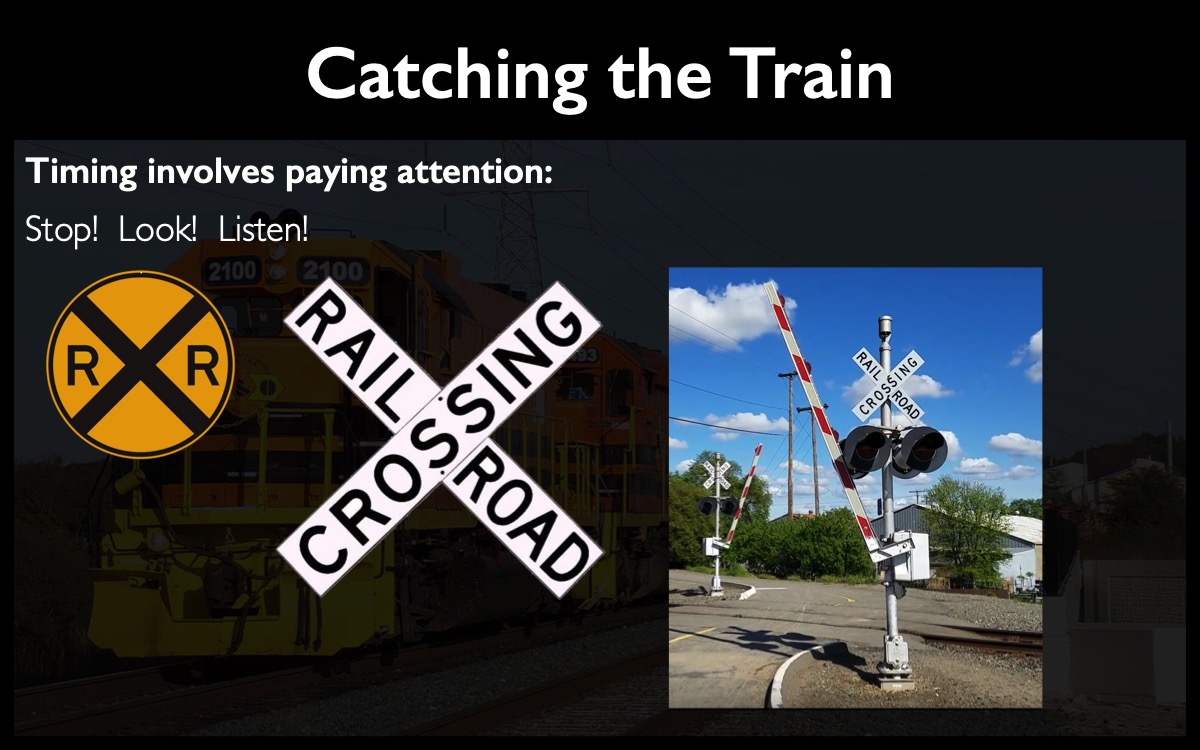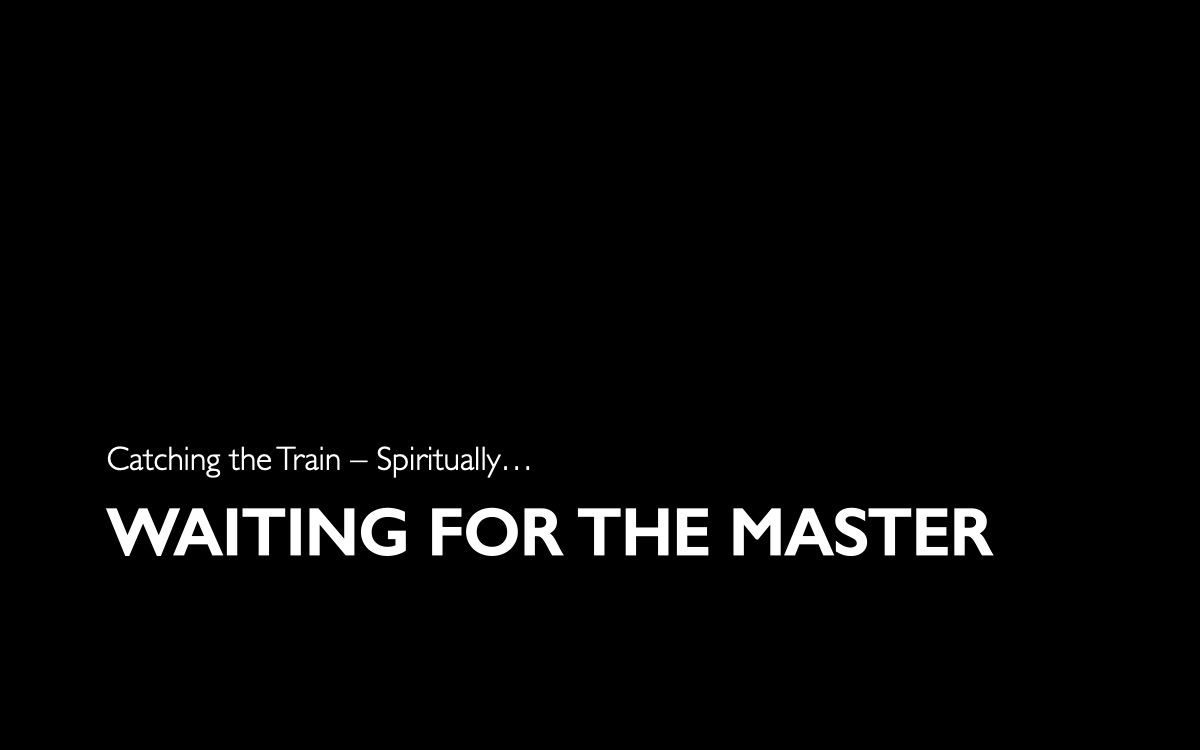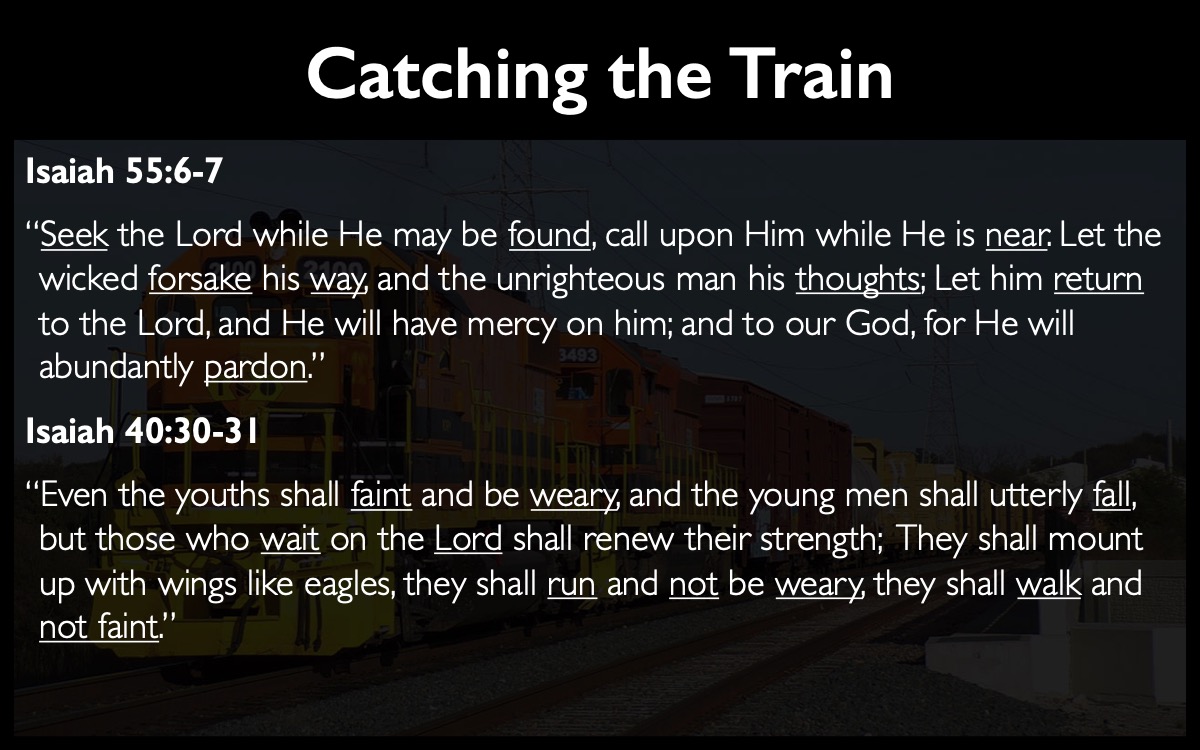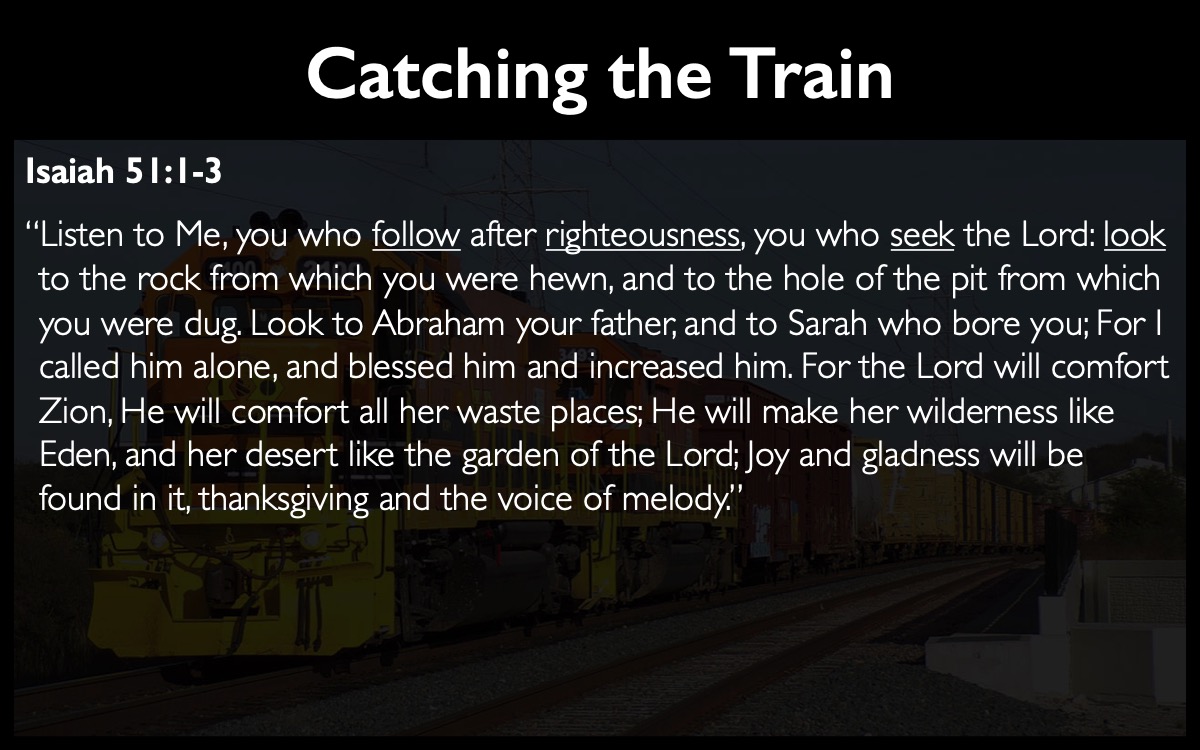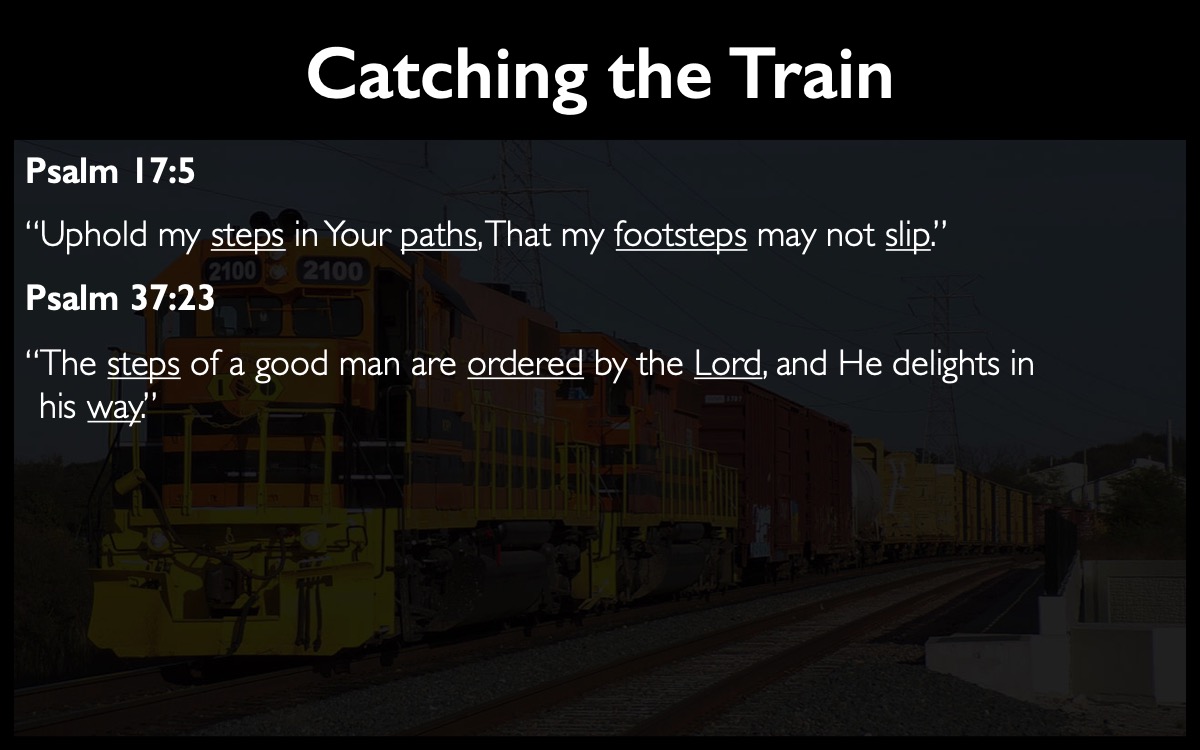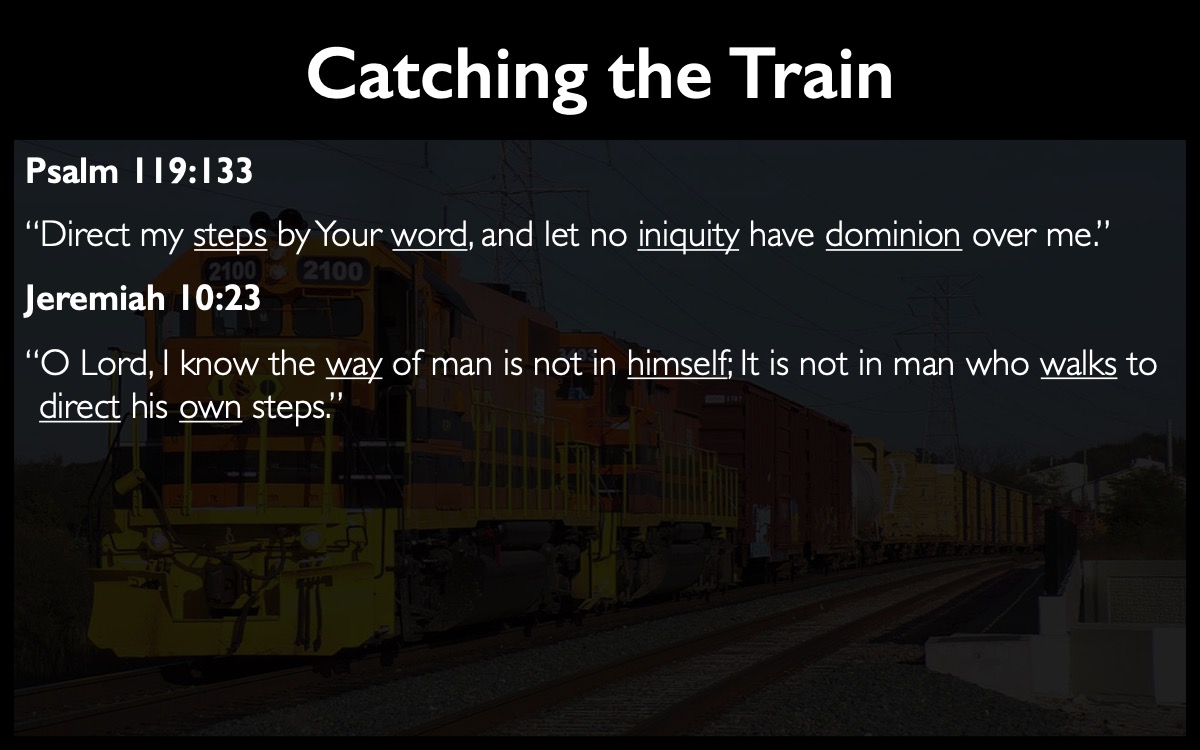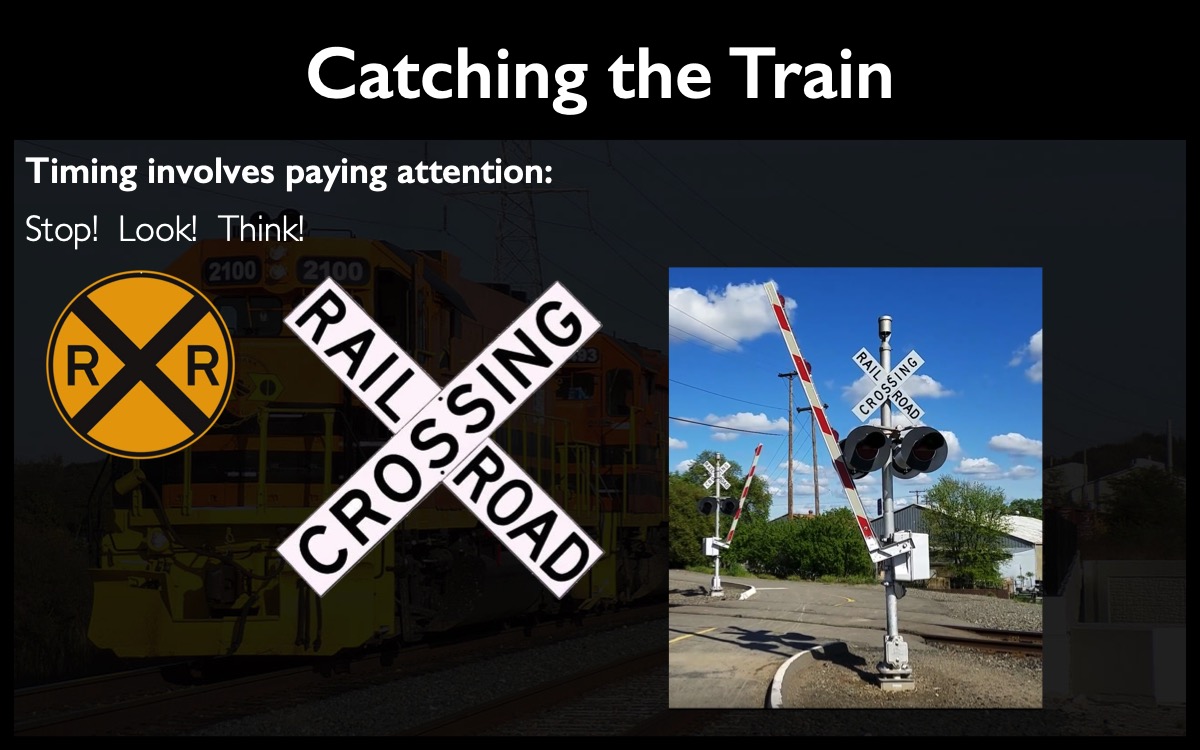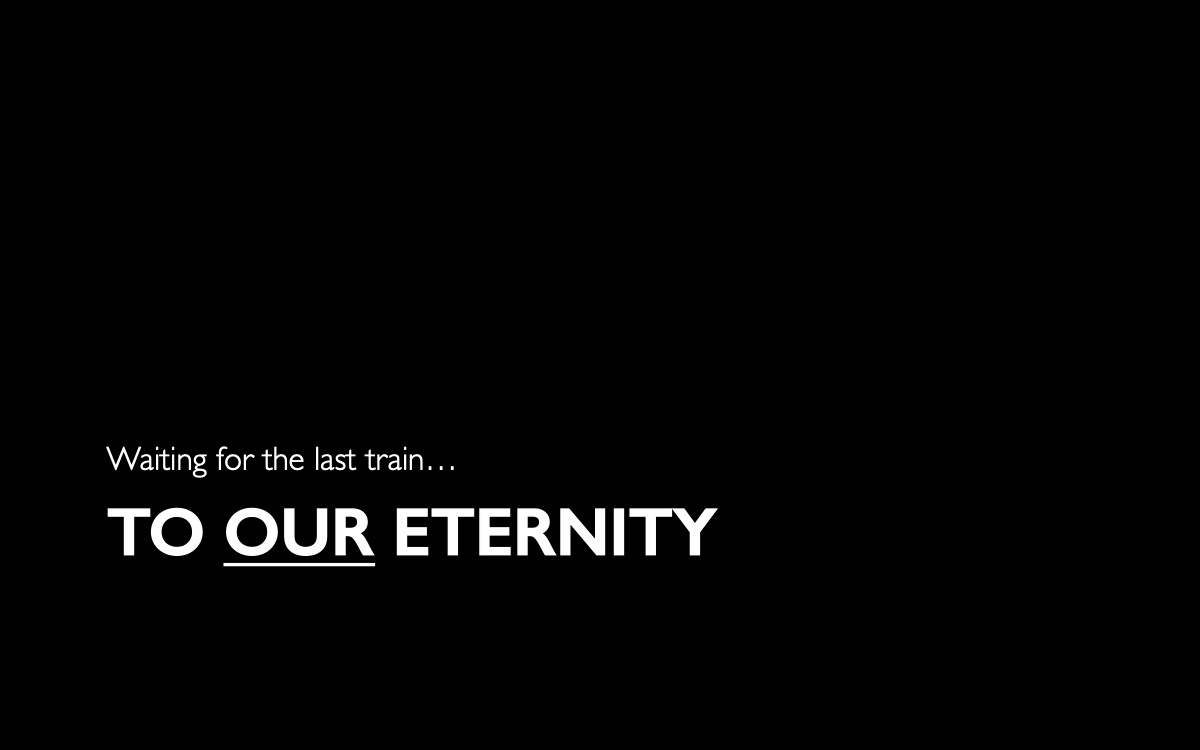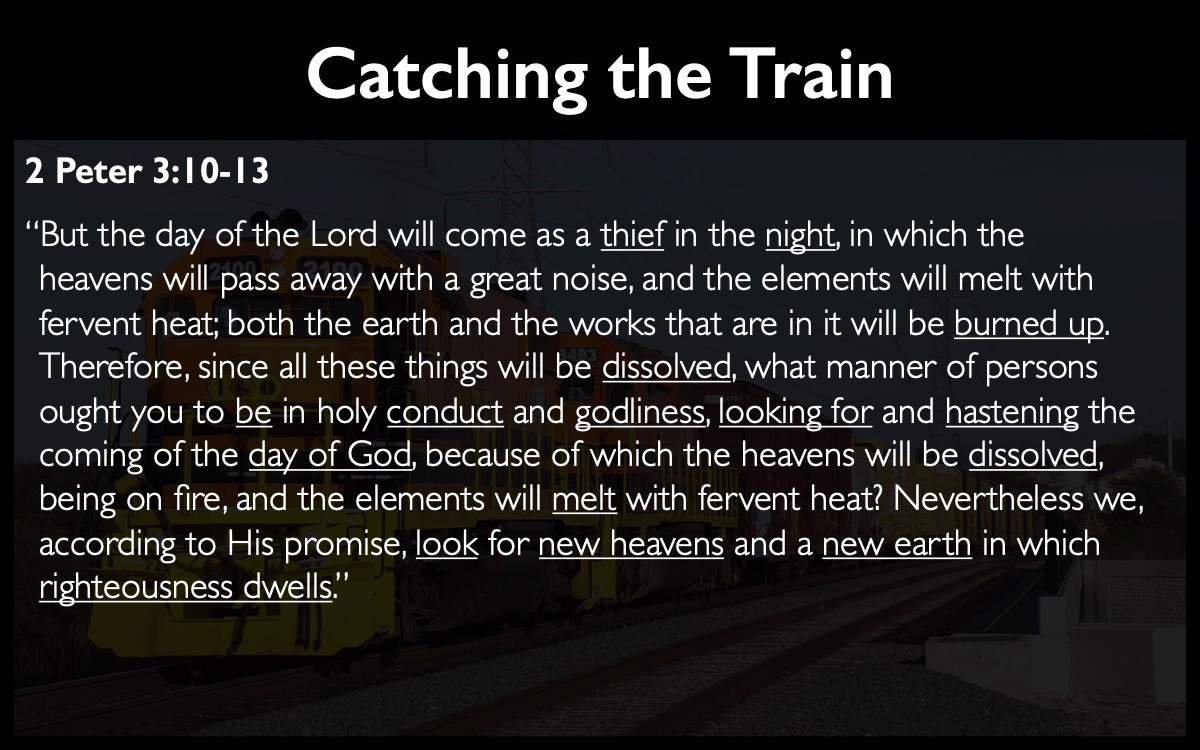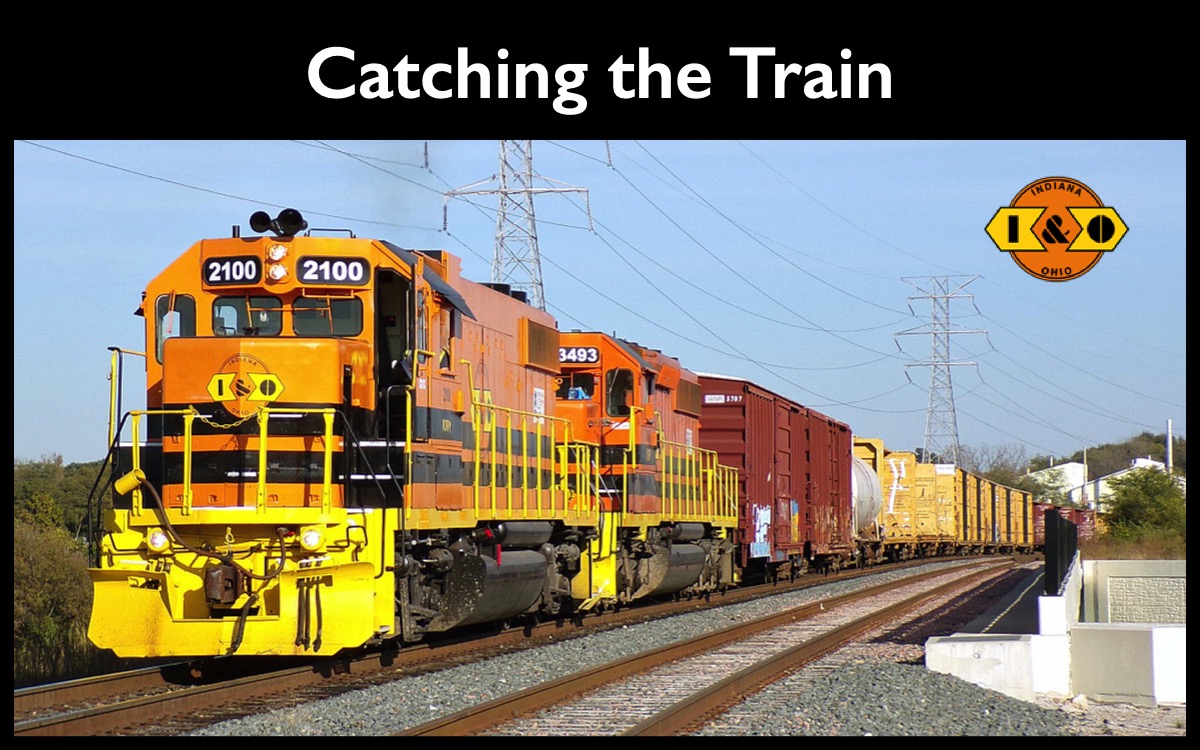
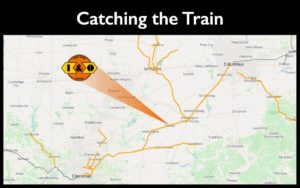 On March 7th, Roger shared a lesson on “Catching the Train” where he begins by sharing some screen captures of the video he took as a train drove by his house around midnight. How that even though he could hear the train, it took him a long time to actually see it.
On March 7th, Roger shared a lesson on “Catching the Train” where he begins by sharing some screen captures of the video he took as a train drove by his house around midnight. How that even though he could hear the train, it took him a long time to actually see it.
Then overlaying images he shows where the train was in the blackness the night before but in the daylight the following morning. Needless to say, the difference was night and day! Haha!
Next, Roger looked at Timing the U.S. and how time or measuring and keeping time in the U.S. became very important to the railroads in the 1800s. Why? Well first to get passers to their destinations quickly, but also to avoid hitting other trains.
Remember, before computers or wireless telephones, it was nearly impossible for two trains to know where the other one was unless they had a very accurate time schedule and both drivers were following their schedules to second.
He talks about “Standard Time” in the U.S. and how this began in 1883 and how it continues to affect us in our global time zones.
He discusses why the focus on time was so important and what happened when it was not carefully observed.
A bit of science looks at how big the earth is and how its size factors into the number of time zones around the globe due to how fast it spins on its axis.
Roger then talks about the railroad that runs behind his home and where it connects and the signs that motorists watch out for in order to stay alive around trains.
All the train talk segues to waiting for the Master and Roger shares passages that help show how important it is to wait for God.
Just like trying to see in the dark while walking, having the light from God and the Bible can guide us like a flashlight. But we must remember the signs of the railroad in the same way we must be thoughtful about God and the coming of the Master.
We hope you can listen to Roger’s lesson below and follow along using slides from his presentation in the gallery.

